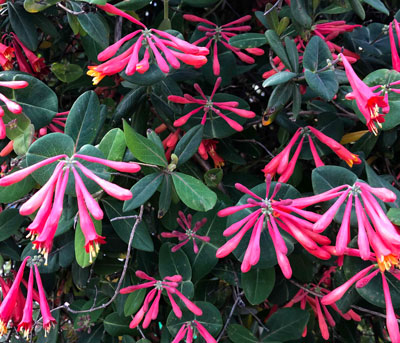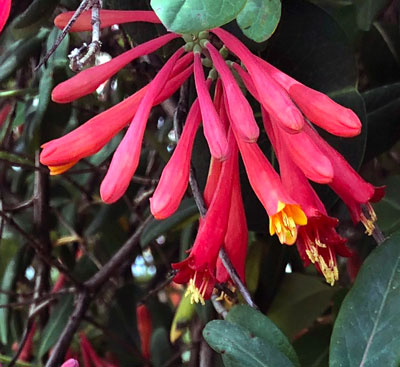Plant of the Week – April 4, 2019: Trumpet Honeysuckle
I decided to let the front page of e-gardens call this plant by the name you’ll see used in most garden references, but from here on out I’m going to use the common name I’ve used all my life: this plant to me is “coral honeysuckle.”
It’s the tame honeysuckle – a vine that doesn’t try to conquer the world. It’s native to the eastern half of our state, where birds spread its seed along fencerows and around shrubs.

Coral honeysuckle is noted for its blue-green leaves that clasp the stems just below the flower clusters and, of course, for its long, tubular blooms.
Reasons to grow coral honeysuckle…
• Adapted to our soils and our climate;
• Stays compact, growing to 10 or 12 ft. tall and wide;
• Grows in sun or part sun;
• Easily trained on a fence or trellis – it does the twining;
• Attractive blue-green, evergreen foliage;
• Beautiful coral-red flowers in spring and sporadically the rest of the growing season (yellow and pink forms also available); and
• Popular with hummingbirds (flowers) and birds in general (fruit).

You can see why hummingbirds would love the tubular blooms of this honeysuckle.
Possible reason you might grow tired of it…
• From my experience, coral honeysuckle is susceptible to powdery mildew when grown in moist, still locations.
One management tip that can help keep it looking its best…
• Trim it heavily soon after it blooms. Encourage fresh, new growth to fill in the voids. You’ll get rid of any leggy stems that might have developed due to mildew, and the new growth will be free of the fungus. Apply a high-nitrogen fertilizer and deep waterings to speed up the process.
